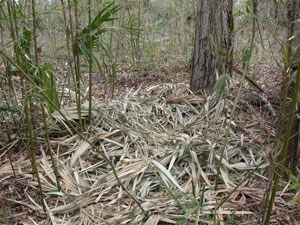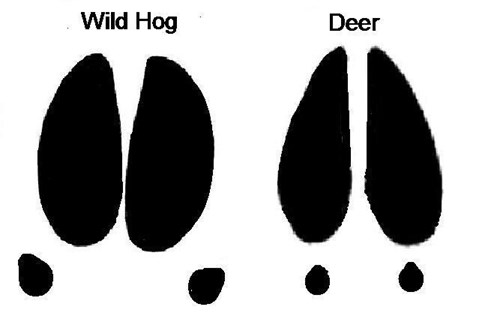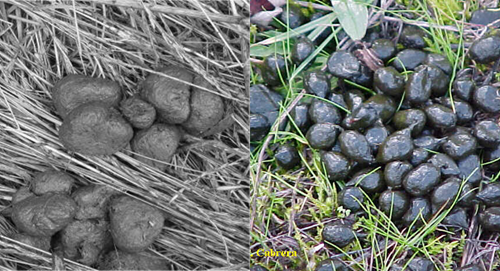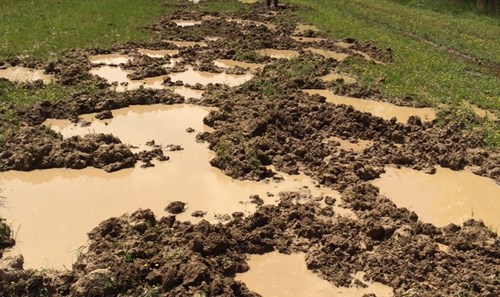Recognizing Wild Hog Sign
Wild hogs leave a number of tell-tale signs that can be easily recognized by a landowner. Signs left by wild hogs include wallows and rubs, nests, tracks and scat, and rooting and trampling.
Wallows and Rubs

Photo: MDWFP
Since swine do not have functional sweat glands, they create shallow, muddy depressions to coat their skin with mud (above). This aids in thermoregulation and deters biting insects and external parasites. They then rub excess mud off themselves using nearby trees or power line poles.
Nests

Photo: wildpiginfo.com
A pregnant sow will leave the sounder to farrow (give birth) alone. She constructs a nest of grass and foliage (shown above) for her litter to stay until they can travel with her. These nests can be found in thick vegetation in secluded areas of the property.
Tracks

Photo: openroadoutdoors.com
Deer tracks and wild hog tracks can be distinguished most easily by the overall shape of the track and by the tips of the toes. Wild hog tracks appear more round in overall shape than deer tracks (more oval or heart shaped). The tips of the toes of hog tracks are more rounded than deer tracks, which come to an obvious point (shown above). The dew claws of wild hogs are also set wider than deer in proportion to overall track width.
Scat

Photo: Chris Jaworoski; bear-tracker.com
Deer scat (right) can usually be distinguished by small, round pelletized pieces, while wild hog scat (left) is usually larger and irregularly shaped.
Rooting and Trampling

Photo: Clay Gibson
Wild hogs are most noted for their feeding behaviors that include rooting and overturning soil to access food (shown above). This rooting can be several inches to several feet deep. Trampling behavior by wild hogs can also cause crop destruction and habitat loss.









